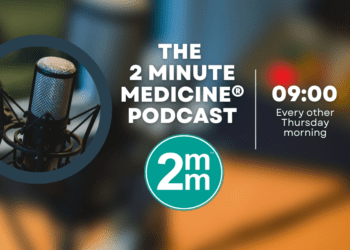Cervical conization may double risk of preterm birth
1. Preterm birth rates were twice as high in woman with prior cervical conization among ongoing IVF singleton and twin pregnancies compared to women without this history.
2. Among all IVF pregnancies after cervical conization, twins were associated with a 9.94 times higher risk of preterm birth.
Evidence Rating Level: 2 (Good)
Study Rundown: One out of every nine infants born in the United States is premature. Preterm birth (birth prior to 37 weeks gestation), is a leading cause of infant mortality and can lead to a host of lifelong complications for those who survive, including developmental delay and respiratory, vision, and feeding difficulties. Additionally, preterm deliveries are costly such that reducing preterm births could save the healthcare system up to $26 billion a year. Therefore, identifying and eliminating risk factors for preterm birth is a major public health goal.
Cervical conization involves removal of a small portion of the cervix to treat high-grade cervical dysplasia to prevent disease progression. Cervical conization has been associated with an increased incidence of future preterm births. Some experts argue that the risk factors for cervical dysplasia necessitating conization overlap with risk factors for preterm birth such that causality cannot be attributed to conization alone. Others argue that there is meaningful biological plausibility whereby cervical strength and integrity is lost after the procedure. Pregnancies conceived via assisted reproductive technologies (ART), such as in vitro fertilization (IVF), are associated with higher rates of preterm birth but also higher rates of twins, which is an independent risk factor for preterm birth. In this population-based study, Danish researchers looked at birth outcomes following IVF and stratified by gestational number to determine whether cervical conization added an additional risk of preterm birth in both twin and singleton pregnancies.
Prior cervical conization was associated with higher rates of preterm birth in both singleton and twin pregnancies. Additionally, of all IVF pregnancies following a cervical conization, rates of preterm birth were nearly 10 times higher for twins than for singletons. Strengths include a population-based sample from a large national registry with low rate of loss to follow-up. Researchers were not able to account for the height of the conization, type of conization procedures. Notably, history of prior preterm delivery was also not accounted for, which creates opportunity for bias, as this is the strongest risk factor for preterm birth and is also known to also be associated with preterm delivery.
Click to read the study, published in Human Reproduction
Relevant Reading: After conisation of the cervix, the preinatal mortality as a result of preterm delivery increases in subsequent pregnancy
In-Depth [retrospective cohort]: All IVF deliveries in Denmark between 1995-2009 were included in the study (16,923 singleton and 4,829 twin deliveries). History of cervical conization (both cold knife cone and LEEP) was assessed in all groups. The main outcomes were preterm birth (≤37 weeks gestation) and very preterm birth (≤32 weeks gestation). Results were adjusted for maternal age, parity and birth year.
Among women with IVF-conceived singleton livebirths, the preterm birth rate was higher for those with prior cervical conization (13.1% vs. 8.2%, aOR=1.59, CI=1.21-2.01). In IVF twin pregnancies, cervical cone was associated with a higher rate of preterm birth (58.2% vs. 41.3%, aOR=1.94, CI=1.36-2.77) and very preterm birth (aOR=2.01, CI=1.21-3.33). Among all IVF pregnancies after cervical conization, twins were associated with a 9.94 times higher risk of preterm birth (CI=6.42-15.4) and a 7.20 times higher risk of very preterm birth (CI=3.48-14.9) than singletons.
More from this author: Contained morcellation for benign gynecologic surgeries feasible, minimize surgical risk, Oocyte vitrification not associated with adverse obstetric or perinatal outcomes, IUD contraception equally safe in teenagers as in older women, No-cost contraception reduces unintended pregnancy rates, Tampon DNA sensitive test for high grade ovarian cancer
Image: CC/Wiki
©2012-2014 2minutemedicine.com. All rights reserved. No works may be reproduced without expressed written consent from 2minutemedicine.com. Disclaimer: We present factual information directly from peer reviewed medical journals. No post should be construed as medical advice and is not intended as such by the authors, editors, staff or by 2minutemedicine.com. PLEASE SEE A HEALTHCARE PROVIDER IN YOUR AREA IF YOU SEEK MEDICAL ADVICE OF ANY SORT.







